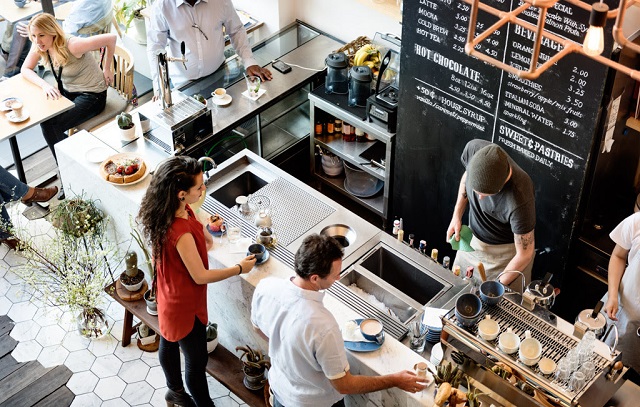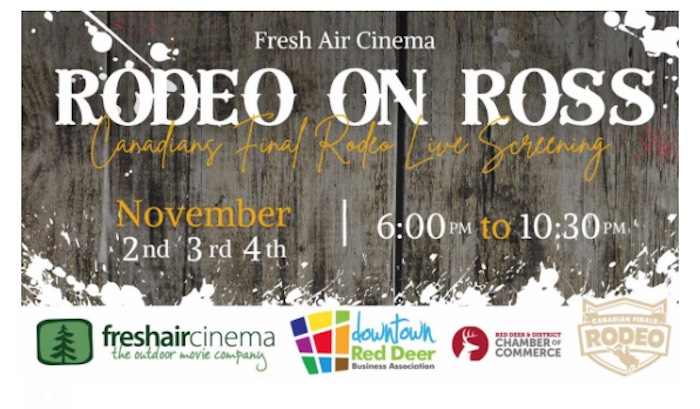Celebrating 10 Years in Red Deer
We truly cannot believe our 10th Anniversary is upon us. Some days it feels like it was just yesterday we were planning opening day, and other days it feels like 50 years has gone by! Much has happened in our lives in 10 years. We started this journey as 2 passionate kids with big dreams and nothing to lose. We had nothing better to do than work everyday to get Cortney’s idea off the ground and nurture its growth, and ultimately, our own growth. Want to know the story? Pour a glass of wine and join my little walk down Memory Lane.
It was early fall of 2006 when my sister Cortney called me with an idea. She was 22 and working in Northern Alberta in a store that offered home decor, gifts, and a small collection of lingerie. She learned how to do bra fittings and quickly realized that the struggle to find everyday comfort and security for women was a real problem. Once being fitted into a quality, great fitting bra, women would come from far and wide to shop these higher end brands and expanded size ranges offered by this shop. Cortney’s intention was not to stay in Northern Alberta, and saw an opportunity in Red Deer where I was already living and working in an accounting firm. She pitched the idea to me, and while I had more reservations, she made it clear she was going to make this happen whether I was in or I was out.
I will be forever grateful that I took on the challenge and jumped on board.
Cortney put countless hours into planning and researching business plans, inventory, budgets, buying, and so much more. She was up first thing in the morning on her computer, and woke me up late into the evening with a new idea or fact that she couldn’t wait to share. She was the driving force behind the start of this story, and I am so proud of her relentlessness and passion at such a young age. She moved in with Mike and I so we could share expenses and limit taking a wage as we started.
It was agreed that I would quit my full time job and work from home on our financials and bookkeeping while she did bra fittings in our first little space. You remember that space, don’t you? We were in the lower level of a downtown Red Deer building, with no windows and only 600 sq feet of space. Our first fitting rooms felt more like barn stalls, and we had a small collection of inventory. Some of our biggest struggles were advertising and getting people down into our little shop, and then we just hoped and prayed to have the right size to show them. We wanted to have all the answers for the women coming to us with questions, but when starting out so small you just can’t possibly know it all and have all that you need. I would get discouraged, but Cortney always stayed focus on the grand vision. She always kept us moving forward.
We were open Tuesday-Saturday’s, and on Sunday’s and Monday’s we often hit the road with a car full of suitcases, doing bra fittings all over Central Alberta in Curves Gyms and hotels. This helped us expand our reach and share the business with others, which in turn brought them into our store when they made trips to Red Deer. This was a very important part of those first few years.
We expanded that little space three times and made it work for two and a half years, but soon the day arrived that we realized we were ready to move on. The search began! We looked at many spaces all around Red Deer before settling on the end unit in the River Valley Place Plaza. There was much to be done; we built a wall in the middle to create a private fitting room area behind the till, and put a lot of work into organizing a stock room. This was a debate for awhile; did we want our stock out on the floor for ladies to shop for themselves, or did we want to keep it in the back to make it easier on fitters? As you know, we chose to keep it all in a stock room. Some customers have struggled with this choice, wishing they could shop our products for themselves, however this is a choice we do not regret.
We decided early on that our focus would be on customer service and product knowledge. We knew that part of the struggle for women shopping for bras was not understanding the extended size range we offered. We also knew we could better stand behind our products if we were able to ensure fit at the time of purchase. We wanted to be able to take control and educate women on proper fit, knowing how inconsistent sizes could be between styles, materials, and brands. We also saw women stuck in what they thought they knew about proper fit, thinking push up bras were the only way to get lift, and that “back fat” was worse than breast tissue pouring out of the cups. We felt it necessary to share with them the importance of snug bands and deeper cups, and the only way to prove this was to get them into our fitting rooms. So we stuck to our belief and built that space, and the next, to have an organized stock room – and I would say that was a major key to our success.
Fast forward to space number three, and our 10th year in business. 3 kids, 0 maternity leaves, 2 weddings, and 2 first home purchases later, it all kind of feels like a blur. Starting a family at the same time as building a business can be really draining. You’re up all night with a newborn but having to do payroll the next day. Or you think you have a Saturday off to clean the house, but a staff member calls in sick. At the end of the day, YOU are your business. And as you know, our Mom passed away when we were teens, so we didn’t have anyone helping us to manage being new Mom’s and running the store. There were many deflating, exhausting, tear filled days and nights, but there have been many elated days and nights knowing we were pushing through and making it happen for ourselves. One memory that stands out as a perfect example of trying to balance home and work is one fall afternoon in 2011. Cortney was working a very busy Saturday, the store was filled with customers, and Mike and I were painting the space we are in now, preparing for our next move. I had posted on Instagram a picture of myself covered in paint, and only minutes later received a call from my panicked Auntie who had our 3 year old at her house for the day. Maddy had fallen off a chair and re-broke her arm, only weeks after having the cast off from a summer break. Everything stopped and off we rushed to hospital. I felt enormous Mom Guilt that I had not been there with her, spending yet another Saturday nurturing our business when I should have been home with her. THAT sums up my first 10 years in business perfectly – a whole lot of Mom Guilt, combined with passion for a business that meant so much to us.
Ahhh… 10 years. So much has happened. A lot of grind work and hustling, but a whole lot of accomplishment and excitement. We are very proud, and even more relieved, to have those years behind us. We feel really great about the foundation we have laid with the help of dedicated staff and the support of the Central Alberta community. We feel even better knowing that the newborn stage is well behind us, for both the business and babies! Somehow we managed to pull it all off, and we are looking forward to a far more predictable next decade. Now we have confidence and experience, and a dedicated team of women who continue to share our passion for customer service with new and returning customers.
That’s our story. I love taking that walk down Memory Lane. Its funny the feelings it conjures up, but the best feeling is knowing the love and support we have received from this community. A funny little coincidence; we grew up in Sundre and moved north when we were teens. Coming back to Red Deer was like coming home, and our Dad tells us now how much our Mom loved Red Deer. She was a country girl at heart, but loved the excitement and lights of this little city. It’s really incredible that we are here now, with so many reminders of her everyday. Coincidence? Not likely.
Thank you, family, friends and community, for supporting 2 passionate girls as they ventured out and tried something incredible. Thank you for sharing us with your own friends and family, putting your trust in us to offer women you love important service and quality products that change lives. We are grateful for all this community has given to us, and we promise to continue giving it right back through everyday fittings and supporting important local causes. We are big believers in the power of WOMEN! And we promise to “lift and support” the women around us in every way we can!
The Bra Lounge, Be Your Own Beautiful
You’ve got the freedom to be yourself
And when they see the woman inside,
You wont want to be anybody else!
We see your confidence, we see your strength
Your power, passion and your grace.
If you’re looking for that new attitude,
The Bra Lounge – Be Your Own Beautiful!
Related



 COVID-192 days ago
COVID-192 days ago
 COVID-1917 hours ago
COVID-1917 hours ago
 Energy2 days ago
Energy2 days ago
 Business13 hours ago
Business13 hours ago
 Alberta2 days ago
Alberta2 days ago
 Alberta2 days ago
Alberta2 days ago
 MAiD15 hours ago
MAiD15 hours ago
 International2 days ago
International2 days ago


















